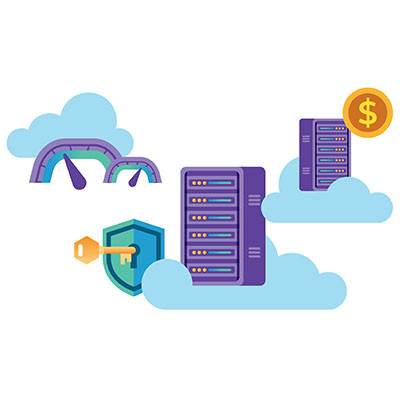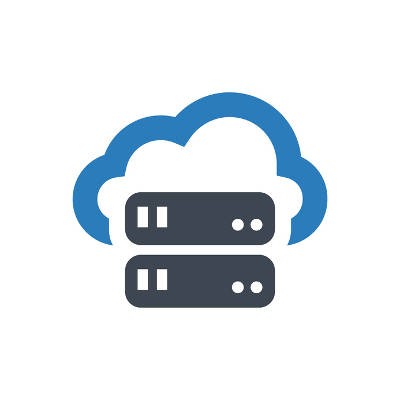k_Street Consulting, LLC Blog
The holidays and the new year are perfect times to reflect on how you can make your team’s jobs easier and more efficient. One way you can do so is by opening up the option for remote or hybrid work, provided their roles can be removed from the office, either part time or full time. Today, we want to highlight some of the tools that a remote workforce needs to be successful—as well as how you can get them.
Cloud computing as a whole has been one of the most transformative technologies for businesses. With so many companies (upward of 90 percent of modern businesses) using some type of cloud computing, more companies than ever are really leaning into the technology and use it for mission critical business processes. Let’s take a look at some of the ways businesses can secure their cloud resources.
Small businesses today are in a prime position to thrive, thanks to a surge in innovative technologies that are affordable and work to boost efficiency. In the past, access to cutting-edge technology was often reserved for large corporations, but today small businesses can now gain quick access to these technologies and can have a real positive effect on the way they go about doing business. Let’s take a look at some of the best technologies small businesses can use to try and compete with the big boys.
Cloud computing has become a common tool, especially Software-as-a-Service (SaaS). Hosted software provides robust options that make sense to all companies, including anytime-anywhere availability, scalability, and provider management of the underlying hardware. In today’s blog, we want to discuss a couple of tips people can use when working with cloud computing.
Other than the innovative jump from tape, data backup hasn’t seen too many great leaps forward, so to speak. Sure, businesses don’t have to worry about resource-intensive manual backups anymore, but the standard approach is so rock-solid that innovation isn’t necessarily needed at this point. Today, we are exploring the backup and disaster recovery process and how modern-day solutions have made an effective tool even better.
Many organizations have become reliant on cloud computing due to its cost efficiency and accessibility to computing resources. However, complications with data security often arise. One way to gain control and maintain accessibility is to use a private cloud. This article explores why a business might choose a private cloud over more affordable public cloud platforms.
Doing business using the cloud is now commonplace, but every business is different and needs to fit its IT infrastructure to its operational requirements. This is possible, but trying to fit a one-size-fits-all solution into a complicated operational structure will cause more harm than good. In this month’s newsletter, we wanted to give five general tips to consider when you want to deploy the cloud in your business.
Everyone knows that a telephone system is a core component of a well-functioning business. Unfortunately, many businesses’ telephone systems haven’t advanced, but the way people do business has. If your business is paying a premium for its telephone system and isn’t getting the collaboration benefits needed to stay competitive, the answer might be VoIP.
Running a business has definite highs and lows. When things start spiraling seemingly out of control, it’s important to maintain the confidence that with the right decision-making and conscientious action, you can get through any problem that a business faces. In today’s blog, we’ll discuss some of the technology that can help you get through tough situations.
For competitive people, hearing the words “can’t win ‘em all” is infuriating. You want to win! These words, however, are completely true. Sometimes in business, you just lose. You may not be able to meet every deadline or win every sale, but there are things you can do to put your business in the best position to meet your goals. Today, we thought we would list a few things having the right technology strategy can do to help your business.
The cloud is a remarkable innovation that businesses of all industries and sizes can utilize to scale growth and operations. How you use the cloud, though, will change depending on your company's specific pain points and requirements. How can you invest in a cloud solution that ticks all your boxes? It starts with assessing whether you want to utilize a public, private, or hybrid cloud infrastructure.
There are certain unspoken rules of doing business, one of which is that technology allows for innovation in various capacities to the point of making older, more traditional ways of doing business obsolete. If you properly use technology, you can improve your business' operations. Let’s look at three ways technology drives innovation in the business world.
Selecting the right servers for your business is extremely important and can either promote optimal performance, reliability, and security of your business computing; or it can present nothing but problems. Today, we will go through six tips to help you make good decisions about servers for your business.
Technology is constantly evolving, but over the past couple of years, if you thought of yourself as being technologically savvy, you would have a pretty good understanding of the technologies that are trending in society. Let’s take a brief look at five technologies that everyone should have a good grasp on.
Cloud computing has emerged as a paramount asset for businesses. Nearly every business leverages some form of cloud computing, with an impressive four-out-of-five opting for multiple Software as a Service (SaaS) applications, virtualized cloud-hosted computing environments, or other cloud-based solutions. Let’s delve into the advantages of embracing cloud computing.
The cloud is an amazing tool for just about any business, allowing for countless benefits that span endless possibilities. However, because it involves the Internet and hosting data in an online environment, there are security challenges that naturally come about as a result of utilizing it. Let’s consider some of the security mistakes that businesses can experience while using the cloud.
Whether we want to admit it or not, the future can be scary, and even the most powerful technology out there is not enough to keep today’s data preserved while it’s in storage. Decades from now, or perhaps even a century, are you confident that your data will be available and ready to use? We’re here today to discuss why you shouldn’t be extremely confident in your hard drives.
Getting the right technology for your business needs isn’t always easy. You may try something that you’ve read about and it doesn’t work out for you. You are then out a lot of money, and your business is left less productive and less efficient. In this month’s newsletter, we thought it would be good to go through some of the tools that can improve your organization's operations.
Managing your technology infrastructure can be challenging, but virtualized computing presents an opportunity for you to make considerable changes and progress to a more efficient way of doing so. With the right technology and the right solutions, you can break through barriers previously in place and do some remarkable things with virtualized technology.
Finding affordable data storage isn’t the challenge it used to be. In fact, some sources say the costs are dropping by 20-to-30 percent annually. This means that businesses that thought cost was a roadblock to using the cloud for their data storage needs, can rest assured that they can confidently go on and secure the amount of secure cloud storage they need.
Software is extremely important for businesses, so when you are creating the strategy and roster of applications you plan to use, you need to be smart about it. One way you can make the most out of your technology budget is to consider Software-as-a-Service (SaaS). With SaaS, your business can get the digital assets it needs at a price you can afford. Let’s discuss what makes SaaS so valuable for businesses.
Cloud computing has become one of the most utilized technologies in business today, and it doesn’t seem to be slowing down anytime soon. It makes it possible for nearly any business to acquire advanced technologies that they could not afford previously, and use them to level the playing field with larger, more capital-rich companies. This month we thought we’d talk a little bit about how moving to the cloud can benefit you and your business.
Technology is remarkably important to just about any business endeavor, so it stands to reason that you should be especially scrutinous with your IT spending so you get the most out of your investment. If the total cost of ownership breaches what you deem affordable, how can you expect to get a return on your investments? Let’s go over what your business needs and how that translates into costs for your company.
The cloud has been a good resource for business for quite a while. Just how good? Currently, nine-out-of-ten businesses operate with some type of cloud-hosted solution. In fact, by the figures, we’re definitely looking at a cloud-hosted future. We thought it would be interesting to take a look at some of the cloud computing stats and trends to paint a picture of just how the cloud has grown up.
Travel has become pretty commonplace for businesses, and today, business travelers can do more than ever thanks to dynamic mobile computing tools. In this month’s newsletter, we will outline some of the most important mobile technologies available to help serve a business while its people are on the move.
Cloud computing is turning into a tool that is universally used by businesses to enhance remote access and provide the scalability for tools that allows a business to get the best bang for their buck. This month, we’ll describe how modern cloud computing works and why it is such a huge potential benefit for your business.
Your servers run the technology that fuels your business. That’s why they are the most important (and expensive) pieces of hardware that you house. When it comes time to refresh one (or all) of your servers, you need to make a choice: Do you purchase a new server to host in-house or do you move your central computing to the cloud?
There is no denying the versatility that technology like the cloud can provide, but it often comes with hidden costs that might affect its cost-to-benefit ratio for your organization. Here are some of these hidden costs, as well as what you can do to minimize the impact they have on your bottom line.
The cloud is a tool that businesses can use to improve operations in a variety of ways. Through the use of the cloud, businesses can dramatically alter the way they conduct themselves, many of which can reduce costs. If you implement cloud solutions, you can expect them to improve accessibility, enable scalability, and improve flexibility, all of which contribute to cost savings in the long term.
We frequently encourage our clients to consider the cloud as a viable option for their data storage needs, be they someplace to store a copy of their data backup or even their primary storage option. Having said that, it is important that we clarify that this cloud storage needs to be secure. Let’s explore how to ensure that much is true.
The cloud is a popular choice for businesses that need access to tools to sustain operations, but there is an innate flaw that comes from hosting anything in an online environment: security. Do not pretend that security is not an issue for your cloud-based resources—failing to acknowledge the importance of security could be a fatal mistake for organizations that leverage cloud-based technology resources.
There is no denying that the cloud has become one of the most popular options for a business to obtain the tools required for their operations. Despite this, it is equally important to acknowledge that there are many ways that the cloud could facilitate security threats if not managed properly. Let’s go over some of the issues that must be addressed if a business is going to successfully leverage cloud technology to its advantage.
Whether you take advantage of it or not, the cloud is a major part of most businesses’ IT infrastructures—especially with the ongoing pandemic, which has kept many workers out of their offices and off of the in-house network. If your business is one of the few that has managed to stay afloat without the cloud, let’s change that. With a high-quality cloud solution, you can future-proof your business in ways you may not have considered.
The cloud is a great tool that lets businesses of all industries and sizes revisit the way operations are handled, but it’s not always clear what the best approach is for your specific business. What are some ways that you can utilize the cloud, and why is it so important that you start thinking about these benefits now?
“Paperwork” has long been associated closely with life in the office, but like so many other “classic” workplace elements, it has been replaced by more modern means. In this case, a Document Management System (or DMS) offers a small-to-medium-sized business far more utility than its predecessor, the filing cabinet.
With cloud computing being utilized by a majority of businesses nowadays, it’s not as big of a surprise when one wants to move files from a locally-hosted server to a cloud server; or, from a cloud server to a new cloud server. This presents a fair amount of problems that you have to be mindful of if you want to move the data and applications over properly. Today, we’ll take a look at some problems you may face, and how to make sure they don’t weigh down your next cloud migration.
Of all the technologies currently used by businesses, the Internet is a strong contender for the most important. Regardless of their size, many businesses invest thousands each month into online Software-as-a-Service solutions as a means of more affordably equipping their users. Let’s talk for a moment about another cloud platform that has seen some advancement: Infrastructure-as-a-Service.
Businesses of all sizes have been able to successfully overcome operational challenges by rethinking and adapting the technology they utilize. Let’s consider a huge example and look at what The Lego Group (as in the building blocks) has done to address some of their technological challenges with improved solutions—as well as how your business can do the same.
Traditionally, if a business needed a solution to a problem, they would research which technology is the best for the problem they had and go out and buy it. If a company didn’t have the money to buy that solution, they would borrow to buy it so that their business wouldn’t stagnate and fail. In today’s tech-driven business environment there is a much better option than mortgaging your business just to save it.
Digital file storage has been a game-changer for many small businesses that rely on dynamic file retention. Instead of storing paper records in a huge room dedicated to file storage, businesses are focusing on digitizing their records and storing them electronically in cloud-based storage systems. This is a great alternative to all those printing costs.
Cloud computing is a tremendous tool for modern businesses. It provides users with anytime-anywhere access to the applications, storage, and processing they need to keep business running efficiently and productively. It is billed as-a-service, meaning that it also comes with the flexibility and scalability most businesses need to control their computing costs. Unfortunately, it’s not always that cut and dry. Today, we are going to look at the hidden costs that businesses might see if they select to use cloud resources.
Collaboration has always been key to the success of businesses, and with the cloud technologies now available, collaboration is possible in more ways than ever. COVID-19 has made business connectivity more important than ever, so we saw it fitting to recognize some of the cloud’s collaboration options. They come in a few distinct flavors:
There are a lot of businesses that use cloud computing. In fact, the latest figures say that over 80 percent of businesses are now using some type of cloud platform for their operations. Of course, there are a lot of different options available to organizations, but one particularly useful solution that may not get a lot of attention is the unified communication platform. This month, we’ll take a look at the cloud-hosted communications platform.
Cloud computing is generally accepted today as a good option for businesses. While we aren’t arguing that this isn’t the case, we wanted to make sure that your cloud use--actual or theoretical--was sufficiently secure. Many will neglect to consider how secure their use of cloud solutions is, which is something that we’d like to fix.
From its very beginnings, Microsoft has been creating devices and software to help users accomplish their goals. This is one reason why their solutions are so commonly found in businesses. Today, we wanted to focus on just one, OneDrive, and highlight some of its features that any business could find useful.
When you look at cloud services, it can be easy to wonder how it is so beneficial for businesses. After all, the monthly service charges are attractive, but how do they provide the value outside of cost? To understand how the cloud brings rapid and sustainable ROI, it may help to look at an analogy.
Today, cloud services can be used for about every facet of business. In fact, your business probably uses the cloud for some very important parts of your business. With so many options to choose from, business owners often develop a cloud strategy that includes software as a service (SaaS), infrastructure as a service (IaaS), and many more options.
Servers are the brains of your business insofar that’s where most of the critical information is stored, and a server failure (with no contingency plan in place) could spell the end-times for your business. With that information, you should be looking for the most reliable option that works for you. Today, we’re going to look at the differences between using hosted servers vs. paying for your own in-house server.
With technology trending up, it’s not hard to believe that there are solutions out there that can give your business a leg up on the competition. Being a decision maker at a small or medium-sized business, it can sometimes be difficult to find technology solutions created with your business in mind. Most software developers understand that the more options their software has, the more valuable it is, but if you are a small business, enterprise software can sometimes be overkill. Let’s look at three technology trends that have small businesses in mind from the get-go.
Microsoft has always offered a variety of business solutions, some which conform to your needs and others that do not. The beauty of this, is you can pick what solution will benefit your business, and leave the ones that will not behind. Here, we will discuss Microsoft 365 and what is offered within the Microsoft 365 package.
In a nod to the strength of modern cloud networks, businesses are now able to gain significant flexibility when making their IT decisions. There are innumerable solutions designed to speed up business, transfer cost, and provide businesses with workable computing platforms they once paid tens of thousands of dollars per year for. For today’s tip, we will look at how using hosted computing solutions provides significant business benefits.
Useful collaboration tools can alter a business significantly by enabling cooperation that is impossible without them. How exactly these tools fit into your business is a whole other matter. Today, we’re going to talk about how you can integrate some pretty great collaboration tools without turning your business upside down.
The cloud is one of the most valuable tools available to modern businesses, but the extent to which organizations utilize it will vary depending on their specific needs. For example, some organizations might be fine with the limited control offered by the public cloud, but others might need more dynamic features and control over their data with a private cloud. We’ll help you determine which is right for you, as well as some of the specific considerations needed for a private cloud solution.
Microsoft has been at the forefront of security through their numerous operating systems for decades. As the security of computing systems and communication gets more important, and with threats to that security growing exponentially, the world’s leading software company has made it a point to introduce a new security platform to help people in many walks of life keep their endeavors secure. Today we’ll look at the new security & compliance services that are bundled with the Microsoft 365 cloud platform.
As technology has become a greater part of today’s working environment, the need for a business to have somewhere to procure the requisite devices from has increased. This is why many businesses serve as vendors, the go-between for the producers of these devices and the businesses looking to purchase them. For obvious reasons, these vendors are essential to the success of many businesses.
The holiday season is upon us, and with it comes the spirit of gift giving. Your IT department would certainly appreciate receiving a few gifts of their own to dabble with over the next business year. We’ve compiled a list of the best technology you can get your IT department to save them both time and resources.
Has your business moved to the cloud yet? If not, you’ve got some work to do--it’s only a matter of time before the need for the cloud completely overshadows your organization. Thankfully, it’s only challenging to move to the cloud if you don’t have a group of professional IT technicians helping you.
When a business undergoes a hardware refresh, it often comes saddled with unexpected costs and downtime. This is sometimes caused by hardware failure, or from unplanned-for data migration. With the advent of virtualized servers, businesses now have a better way to recover from the woes of server refreshes. Rather than purchase new hardware, it’s more economically viable to go with a virtual server that’s hosted in the cloud.
Businesses are turning to the cloud because it’s designed to make operations easier and save them money. In light of these benefits, organizations that have yet to move to the cloud may be missing out on some serious advantages by continuing to do IT the hard way. If you’re still unsure about the cloud, then consider how these three features of cloud computing can change how you do business.
Efficient utility software deployment has been a priority for businesses for much of the past three decades, but today’s software developers are beginning to more frequently offer their titles as a service, giving end users the ability to utilize powerful software solutions from anywhere, for what is often a reasonable monthly payment. The dissemination of useful computing resources from the cloud, whether it’s a private cloud server, or a public cloud platform through a reputable cloud provider, can be of great benefit to your business.
The cloud is a great asset that your business can use to your business’ operational efficiency, but only if you’ve put plenty of thought into the implementation process. Since the same cloud solution likely won’t work in the same way for two different organizations, you’ll need to intimately know what your business needs so that you can build and deliver a cloud solution to meet these demands. This week’s tip is all about helping you determine the best cloud solution for your organization.
If you haven’t implemented cloud computing for your business yet… why? We understand that you can’t throw caution to the wind, but it’s really in your best interest to invest in the cloud. Doing so can allow your organization to experience unprecedented periods of enhanced operations and growth in the future. We’ll dispel three of the most common misconceptions about the cloud so that you can make the best decision possible for your business.
Cloud technology has become an integral part of doing business today. This has led to a need for, and subsequent availability of, cloud services from a variety of sources to be able to meet the needs of a business. These services aren’t all created equally, however, and as a result, the source of cloud services is a critical consideration to take into account when choosing a provider.
Let’s say that you are a consumer looking to take advantage of data backup in an affordable way. You want a way to keep your data safe in the event of a disaster. For the average PC user, Google Drive now allows users to take backups of specific files and folders via the Backup and Sync application on their desktop PC.
Virtualization is a key player in today’s efficient workplace. Businesses of all kinds are looking to expand and enhance the way that they function on a fundamental level, and virtualization offers never before seen opportunities to cut down redundancies and implement new methods to improve operations.
Can you think of a more revolutionary technology in today’s modern age than cloud computing? Companies are now able to implement solutions that are both flexible and scalable enough to suit the needs of both small and large organizations. To this end, the same cloud won’t work for every type of organization. Here are four questions that you’ll need to ask in order to get the best service from your specific cloud provider.
The cloud has proven to be an extremely useful tool for the modern business. Not only does it provide anywhere-anytime access to applications, processing, storage, et al; it also delivers those products as a service, allowing you to budget for recurring costs rather than major upfront ones. This provides your organization with functional, supported, and secure computing environments that eliminate a lot of the support costs that traditional computing environments require. It sounds like a perfect scenario for small and large businesses alike, but things aren’t always what they seem, as a lot of cloud users have found that they have incurred several hidden costs by using cloud platforms. Today, we take a look at these hidden costs.
Thanks to mobile devices and remote access, businesses around the world are freeing their employees from the tethers of their desks and allowing them to work remotely. Some companies have employees that work remotely all of the time, which presents the question of how you keep them connected to the workplace, productive with their time, and part of your business’ culture. This week we’ll go over some tips to help your remote employees be as successful with their time as possible.
Businesses have a lot to gain by personal file storage and sharing, but then again, so does the individual user. After all, even the most ambitious business owner has a personal life and people to share information with. How can you share files with people without leaving them vulnerable to data theft and worse? Here are some options that you can use for your personal file sharing solution.
Depending on your business’ operations and industry, there’s a solid chance that your company has some sort of investment in cloud storage. Over 85 percent of businesses today use some type of cloud platform, and many of them use a multi-cloud approach to their organization’s IT. At the center of this trend is cloud storage. This month, we take a look at the types of cloud storage and how one (or more) of the types can help meet your business’ needs.
Cloud computing is an ever-growing industry, and it’s only going to grow more popular as time goes on. More businesses than ever have started to adopt the cloud in at least some capacity. Is your company one of the few that haven’t yet moved to the cloud? If so, you’ll want to at least consider it, as your business could gain considerable benefits from doing so.
If your business isn’t already taking advantage of the cloud in some way, you’re in the minority. Most businesses use it for something or another, depending on the industry and service rendered. Yet, there are all kinds of different cloud-based infrastructures that your organization can take advantage of, which might make the decision somewhat challenging to make. What’s the best type of cloud solution for your business?
The cloud is one of the best modern technologies that a business can use to its advantage, but nowhere is it as important as it is for data backup and disaster recovery. How does your business ensure that its data remains redundant and secure from situations outside of your control? We know of one way that you can take back control of your business’s future, and that’s with a cloud-based backup and disaster recovery solution, also known as BDR.
Over the past few years, more and more small and medium sized businesses (SMBs) have adopted software as a service (SaaS), in favor of the traditional use of software that was stored locally on hardware. Whether you are already using SaaS for a few of your operations or you’re considering implementing it for the first time, there a few fundamental items you should understand: What is Software as a Service? What are the benefits of adopting SaaS applications? In what departments can SaaS be utilized?
Generally, small businesses will only have, at the most, a couple of servers in the office that are dedicated to storing or sharing data across an in-house network. These machines are absolutely critical to the success of your organization, as without them, you wouldn’t be able to access or store important information. If you want to optimize the way your server infrastructure is set up, however, virtual cloud-based servers can offer a significant benefit for your organization.
Have you ever heard the phrase, “Too much of a good thing becomes a bad thing?” Well, there’s a hint of truth to this, especially in the business world. Just because your cloud solution allows your business to store a huge amount of data in the cloud, doesn’t mean that you are getting the best return-on-investment. In fact, you might just be unknowingly wasting resources that would be better used elsewhere.
If we asked you to think of a business technology that doesn’t take advantage of the cloud in some capacity, would you be able to come up with one? Cloud computing has become a part of almost every business endeavor, and for good reason. SMBs can leverage the cloud for any number of services or solutions, including email, data storage, server virtualization, and so much more.
If you’ve recently decided to implement cloud computing for your business, then we commend you. You’ve chosen to use a powerful and dynamic solution for your computing needs. However, choosing to use the cloud and actually implementing the cloud are two entirely different monsters. Now that you have your sights set on the cloud, what do you have to do to get your infrastructure ready for migration?
In a world where mobility is king, it can be challenging at best to implement new solutions without first taking into account how they can affect your business’s mobility. Especially with the cloud gaining ground, companies have their eyes on mobility and the requisite security, hoping to achieve greater flexibility and profitability by doing so.
Your business’s productivity suite, be it Google Apps for Work or Microsoft Office 365, is a critical component for your success. These services, when implemented in the cloud, can be major game-changers, and it’s thanks to the convenience of mobile data and application access that have led to such vigor in the development of the cloud.
Businesses are volatile entities that can change drastically at any given moment. All it takes to eliminate data and cause disaster is an unexpected natural disaster, like a flood or fire, or a hardware failure that wipes out mission-critical data. The fact remains that your organization could face significant downtime from data loss, and the future of your business could hang precariously in the mix.
Thanks to the advancements of virtualization and cloud computing, many businesses are hosting key parts of their IT infrastructure off-site. While this move is great for mobility and productivity, it makes operations extremely dependant upon a working Internet connection. If this scenario describes your organization, what’s your plan to stay productive should your Internet connection fail?

In an infamous 2012 survey by Wakefield Research, the ignorance of the general public regarding cloud computing was revealed: 51 percent believed that stormy weather interferes with cloud computing, and 29 percent thought that the cloud was an actual cloud. Furthermore, what may elude many computer users is the fact that a process known as virtualization is actually what’s behind cloud computing (not atmospheric conditions).
 Moving your office is never an easy task. You have to move furniture, personal objects, and above all else, your technology infrastructure. There’s nothing simple about moving your office’s technology, but it’s still nothing to get worried about. That’s why we’re here to help, from suggesting the optimal network cabling, to the proper deployment of new and improved technology solutions.
Moving your office is never an easy task. You have to move furniture, personal objects, and above all else, your technology infrastructure. There’s nothing simple about moving your office’s technology, but it’s still nothing to get worried about. That’s why we’re here to help, from suggesting the optimal network cabling, to the proper deployment of new and improved technology solutions.
 Your business is no-doubt reliant on your email solution as a critical communications component. Without it, your organization’s operations could be significantly hampered, forcing you to improvise in order to reach out to internal and external parties. As an important part of any business’s communications, it’s crucial that your email solution is as efficient as possible, but managing an email server can be challenging for the average business owner.
Your business is no-doubt reliant on your email solution as a critical communications component. Without it, your organization’s operations could be significantly hampered, forcing you to improvise in order to reach out to internal and external parties. As an important part of any business’s communications, it’s crucial that your email solution is as efficient as possible, but managing an email server can be challenging for the average business owner.
 Has your business adopted the cloud and used it to fully leverage your technological assets? The cloud is an exceptional tool that allows businesses to deploy and access information in never-before-seen ways. While the cloud is great for this purpose, these lessons can be applied to parts of your in-house IT infrastructure.
Has your business adopted the cloud and used it to fully leverage your technological assets? The cloud is an exceptional tool that allows businesses to deploy and access information in never-before-seen ways. While the cloud is great for this purpose, these lessons can be applied to parts of your in-house IT infrastructure.
 With cloud computing on the rise in the business environment, it’s becoming more clear that organizations need to know what type of cloud solution will best benefit their business model. With the private cloud gaining much attention, it’s important to know what attracts businesses to it. Why should your business implement a private cloud solution, and how should you go about doing so?
With cloud computing on the rise in the business environment, it’s becoming more clear that organizations need to know what type of cloud solution will best benefit their business model. With the private cloud gaining much attention, it’s important to know what attracts businesses to it. Why should your business implement a private cloud solution, and how should you go about doing so?
 Cloud computing started out as a trend, but it’s become a staple in the modern business environment. A recent poll of IT and business executives by Harvard Business Review and Verizon shows that 84 percent of respondents have increased their use of cloud services in the past year, 39 percent of which “increased significantly.” The issue that comes from such an increase is the idea of employees accessing information that they aren’t supposed to.
Cloud computing started out as a trend, but it’s become a staple in the modern business environment. A recent poll of IT and business executives by Harvard Business Review and Verizon shows that 84 percent of respondents have increased their use of cloud services in the past year, 39 percent of which “increased significantly.” The issue that comes from such an increase is the idea of employees accessing information that they aren’t supposed to.






























































































